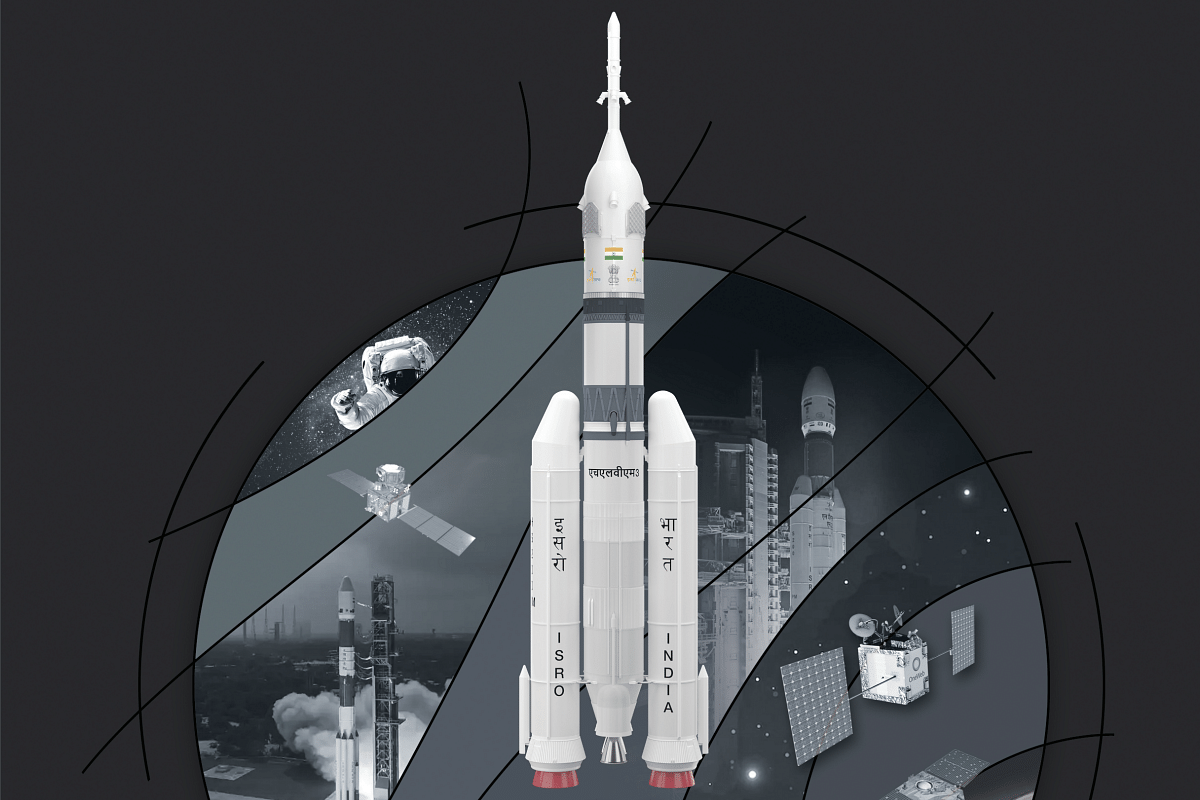Tech
New ISRO Report Details How Space Agency Is Turning India's Human Spaceflight Into A Reality

ISRO
The Indian Space Research Organisation has been actively working on a number of projects to achieve its goal of sending humans to space, according to the Indian space agency's' recently released annual report
These projects include the development of a human-rated LVM3 launch vehicle, upgrading ISRO's mission control complex, building an ‘umbilical tower’ on the second launch pad for maintenance of the rocket while on the launch platform, and setting up a direct-to-ground communication mobile unit in Australia's Cocos Island.
India's Gaganyaan Mission will be launched from the second pad at the country's only spaceport in Sriharikota.
The astronauts selected for the mission have completed the first semester of mission-specific initial training, after completing a generic training for spacefaring in Russia.
"The Mission specific training includes theoretical courses in engineering disciplines and training on Gaganyaan flight systems. The training also covers Aero-medical training & Fitness and Recovery & Survival training as part of the curriculum," the report said.
The training included 218 lectures, 75 physical training sessions, two flying practices, two medical evaluations, and two course-related evaluations.
Astronauts were trained in theoretical courses on engineering disciplines such as Basics of Spaceflight, Propulsion, Aerodynamics, and courses on Launch Vehicles and Spacecraft were conducted
Their physical training included Yoga, Aero-medical training, and Flying Practice.
Further, the virtual reality training focused on familiarising the to the hardware and interiors of the crew module and its operation during the mission.
The space agency plans to carry out two test vehicle missions to showcase crew escape systems mid-flight and the retrieval of the crew module once it splashed down in the ocean.
This will be followed by the first unmanned Gaganyaan mission that will carry an unpressurised crew module.
If the test vehicle missions go as planned, the space agency aims to launch at least one unmanned mission later this year.
The upcoming test vehicle mission plans to evaluate various safety systems, including crew abort and escape parachutes, deceleration and splashdown mechanisms, upright stability post-splashdown, and astronaut extraction procedures.
A single-stage rocket will be employed to transport the orbital module into space for the test vehicle mission.
Two more test vehicle missions will follow to test all systems before the second unmanned flight, with the final manned flight scheduled for 2025.
According to the ISRO report, the space agency has planned 15 satellite and launch vehicle missions this year, including launching the small satellite launch vehicle and three space science missions.
ISRO has also modified its LVM-3 rocket to make it human-rated for the Gaganyaan mission.
This means that additional redundancies and margins have to be added to ensure the safety of the crew. The rocket consists of two solid boosters, as well as a core liquid fuel-based stage and a cryogenic upper stage. During a launch in March, human-rated solid boosters were utilized for the OneWeb satellites.
According to the report, eight tests have been performed to qualify the core stage, including firing the engine for medium and long durations, as well as under unfavorable conditions. Additionally, eight tests have been carried out to qualify the upper cryogenic stage. Three more hot tests are scheduled for Q2 2023 to enable the engine to be rated for human use.
Further, ISRO is also developing the Environment Control and Life Support System (ECLSS), which is an essential component of a human spaceflight mission. Its functions include maintaining pressure, temperature, humidity and gas exchange for the crew.
According to the report, the design and configuration of several of the components of the system have been finalised.
“Preliminary accommodation of the ECLSS system and half-humanoid in G1 (first unmanned mission) is completed,” the report said.
ISRO will send a half-humanoid in the unmanned mission to assess likely impacts on human beings.
The space agency is also working to create a network of ground stations that will allow direct-to-ground communication. Support for this has been finalised from European ground stations.
Further, ship-borne terminals will also be required for telemetry, tracking and communication with the spacecraft during the ascent phase of the mission.
A transportable terminal will be set up at Cocos Island, Australia, for which arrangements have been made by the Indian space agency.
The space agency is also modifying the existing control centre to make the Gaganyaan Control Facility with a different configuration of display and consoles.
The second launch pad has been equipped with an ‘umbilical tower’ to aid with maintenance of the launch vehicle while on the pad.
Additionally, a trial of a high-speed bubble lift has been conducted. The development of the white room and crew access arm, from which astronauts will enter the spacecraft, is also underway.
Support Swarajya's 50 Ground Reports Project & Sponsor A Story
Every general election Swarajya does a 50 ground reports project.
Aimed only at serious readers and those who appreciate the nuances of political undercurrents, the project provides a sense of India's electoral landscape. As you know, these reports are produced after considerable investment of travel, time and effort on the ground.
This time too we've kicked off the project in style and have covered over 30 constituencies already. If you're someone who appreciates such work and have enjoyed our coverage please consider sponsoring a ground report for just Rs 2999 to Rs 19,999 - it goes a long way in helping us produce more quality reportage.
You can also back this project by becoming a subscriber for as little as Rs 999 - so do click on this links and choose a plan that suits you and back us.
Click below to contribute.
Latest